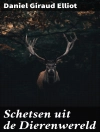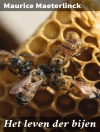Leaping Ahead: Advances in Prosimian Biology presents a summary of the state of prosimian biology as we move into the second decade of the 21st century. The book covers a wide range of topics, from assessments of diversity and evolutionary scenarios, through ecophysiology, cognition, behavioral and sensory ecology, to the conservation and survival prospects of this extraordinary and diverse group of mammals. The collection was inspired by an international conference in Ithala, Kwa Zulu-Natal, South Africa in 2007, where prosimian biologists gathered from Canada, Finland, France, Germany, India, Italy, Japan, Madagascar, South Africa, Tanzania, the United Kingdom, and the United States of America. The meeting reverberated with the passion prosimian researchers feel for their study subjects and with their deep concern for the future of prosimians in the face of ongoing habitat destruction and the burgeoning threat of bushmeat hunting. Chapters for this volume were contributed by researchers from across the globe; they attest to the diversity, vibrancy and rapid growth of prosimian biology, and to the intellectual advances that have revolutionized this field in recent years. Since its earliest beginnings, prosimian research and its resultant literature have had a strong francophone component, and researchers in many prosimian habitat countries are more comfortable reading and writing in French rather than English. French summaries of all chapters have been included. The volume is targeted at researchers, both those entering the field and established scientists, who have an interest in the biology of primates and small mammals. It is also aimed at conservation biologists seeking a deeper understanding of the faunas and conservation developments in Africa, Madagascar and Southeast Asia, and anyone who has an interest in discovering the true diversity of our order, the Primates.
Mục lục
Part I.- Systematics and evolution.-1. What’s in a name? Higher level taxonomy of the prosimian primates.- 2. Species-level diversity among Malagasy lemurs.- 3. Strepsirhine divergence dates estimated from mitochondrial gene sequences, and the status of Daubentonia madagascariensis.- 4. Organismal biology, molecular systematics, and phylogenetic reconstruction.- 5. Is temporal plasticity in lemurs a strategy for dealing with unpredictable or predictable, seasonal environments?.- Part II. General ecology.- 6. Anthropoid analogues? Life history variation in Madagascar’s giant extinct lemurs.- 7. Population genetics, parasitism and long-term population dynamics of Microcebus murinus in littoral forest fragments of south-eastern Madagascar.- 8. Range shifts of mouse lemurs in south-eastern Madagascar: evidence from mitochondrial genetic data.- 9. Habitat use by the red slender loris (Loris tardigradus tardigradus) at Masmullah Proposed Forest Reserve in Sri Lanka.- 10. Forest fragmentation imperils red slender lorises (Loris tardigradus tardigradus) in south-western Sri Lanka.- 11. Head posture and visual orientation in Loris tardigradus during locomotion on oblique supports.- 12. Predation on two lemur species in Sahamalaza Peninsula, north-western Madagascar.- Part III. Behavioral ecology.- 13. Preliminary results on the behavioral ecology of the hairy-eared dwarf lemur (Allocebus trichotis) in Andasibe, eastern Madagascar.- 14. Venus in fur: female power in mouse lemurs Microcebus murinus and M. griseorufus.- 15. Group size, composition and stability in a wild population of blue-eyed black lemurs (Eulemur flavifrons) at Ankarafa, Sahamalaza National Park.- 16. Eviction and troop reconstruction in a single matriline of ring-tailed lemurs (Lemur catta): what happened when “Grandmother” died?.- Part IV. Dietary ecology.- 17. Coprolites associated with Archaeolemur remains in north-western Madagascar suggest dietary diversity and cave use in a subfossilprosimian.- 18. The dental ecology of ring-tailed lemurs.- 19. Exudates and animal prey characterize slow loris (Nycticebus pygmaeus, N. coucang, N. javanicus) diet in captivity and after release into the wild.- 20. Isotopic variability and lemur diet in a dry Madagascan forest: a cautionary tale.- Part V. Physiological ecology.- 21. Variable energetic strategies in disturbed and undisturbed rain forests: Eulemur rubriventer fecal cortisol levels in south-eastern Madagascar.- 22. Photoperiod-related changes of thermoregulatory capacities in adult mouse lemurs (Microcebus murinus).- 23. Spoilt for choice: selection of hibernacula by Cheirogaleus medius.- 24. Seasonality and energy strategies in co-existing mouse lemurs (Microcebus berthae and M. murinus).- Part VI. Sensory ecology, communication and cognition.- 25. The ecology of touch: are prosimians special?.- 26. The importance of olfaction for predator detection in spectral tarsiers.- 27. Ecological factors in the size of olfactory structure in perinatal strepsirrhines.- 28. The sensory ecology of foraging for animal prey.- 29. Evolution of auditory sensitivity among strepsirhine primates.- 30. Vocalizations of red slender lorises (Loris tardigradus tardigradus) in Masmullah Proposed Forest Reserve, Sri Lanka.- 31. Variation in prosimian infant isolation calls and its evolutionary implications.- 32. Primate serenades: call variation, species diversity and adaptation in nocturnal strepsirhines.- 33. Noises in the dark: vocal communication in nocturnal pair-living primates.- 34. The use of Artificial Neural Networks in studying lemur vocal communication.- 35. A quantitative description of the vocal types emitted in the indri’s song.- 36. What can virtual vocal tracts tell us about lemur communication?.- 37. Cognitive capacities of captive gray mouse lemurs as evidenced by object manipulation.- Part VII. Conservation of prosimian.- 38. Status, distribution and conservation of slender lorises in India.- 39. Berenty Reserve: past, present and future.- 40. Berenty Reserve: interactions among the diurnal lemur species in the gallery forest.- 41. Why do some ring-tailed lemurs feeding on Leucaena not suffer from alopecia syndrome?.- 42. The impact of alopecia syndrome on female reproductive parameters in ring-tailed lemurs (Lemur catta) in Berenty Reserve, Madagascar.- 43. Conservation of prosimians in Madagascar: a view from the great red island.












